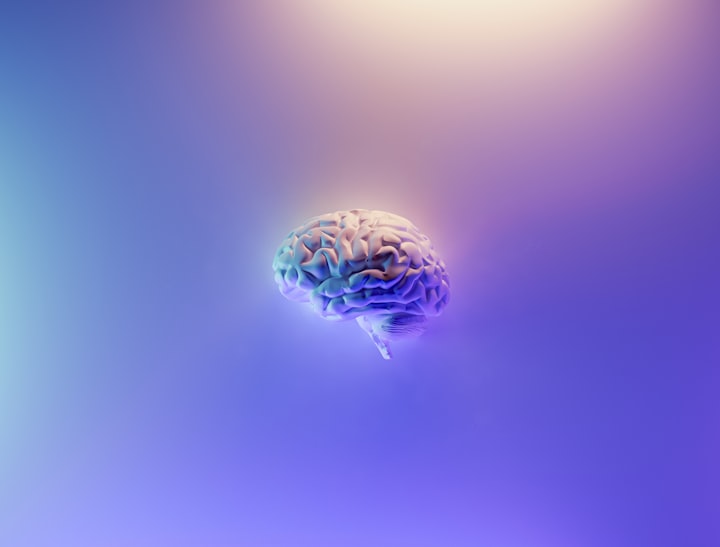The Curious Case of Phantom Limbs
Decoding Phantom Limbs and the Brain’s Ghostly Dance

The human body is a marvel of complexity, but even more intriguing are the mysteries that lie within our minds. One such enigma is the phenomenon of phantom limbs, where amputees continue to feel sensations or pain in limbs that no longer exist. In this article, we delve into the curious world of phantom limbs and explore the fascinating science behind this perplexing phenomenon.
Understanding Phantom Limb Sensations
Definition of Phantom Limb Phenomenon
Phantom limb sensation refers to the perception of sensations, including pain, tingling, or movement, in a limb that has been amputated. Despite the absence of the limb, the brain continues to receive signals that create the illusion of its presence.
Common Experiences Among Amputees
Many amputees report experiencing phantom limb sensations shortly after surgery, with sensations ranging from mild tingling to intense pain. These sensations can persist for years or even decades after amputation, affecting the quality of life for those affected.
The Role of Neuroplasticity
Explanation of Neuroplasticity
Neuroplasticity refers to the brain's ability to reorganize and adapt in response to changes in sensory input or environmental demands. After limb loss, the brain undergoes remarkable changes as it rewires itself to compensate for the missing limb.
How the Brain Adapts After Limb Loss
Following amputation, the areas of the brain that were once responsible for processing sensory information from the missing limb may become rewired to respond to input from other body parts. This neural reorganization can lead to the sensation of phantom limbs as the brain attempts to make sense of altered sensory input.
Mechanisms Behind Phantom Limb Sensations
Neural Reorganization
Studies using neuroimaging techniques have revealed changes in the brain's somatosensory cortex following amputation, suggesting that neural reorganization plays a significant role in the development of phantom limb sensations. The brain may create new connections between neurons in an attempt to compensate for the loss of input from the missing limb.
Sensory Feedback and Perception
Sensory feedback from the remaining nerves in the residual limb, as well as signals from surrounding tissues and muscles, can contribute to the perception of phantom limb sensations. Changes in the way the brain processes this feedback may result in the sensation of movement, touch, or pain in the absent limb.
Clinical Implications and Treatment
Strategies for Managing Phantom Limb Pain
While phantom limb sensations can be challenging to treat, various strategies have been developed to help manage symptoms. These may include medications, such as antidepressants or anticonvulsants, as well as non-pharmacological approaches like mirror therapy and transcutaneous electrical nerve stimulation (TENS).
Advances in Prosthetic Technology
Advancements in prosthetic technology have also provided new options for amputees experiencing phantom limb sensations. Sophisticated prosthetic limbs equipped with sensors and microprocessors can provide sensory feedback to the user, helping to alleviate phantom limb pain and improve function.
Research and Discoveries
Studies on Phantom Limb Sensations
Researchers continue to investigate the underlying mechanisms of phantom limb sensations, using advanced imaging techniques and neuroscientific methods to unravel the mysteries of the brain. Recent discoveries have shed light on the complex interplay between neural circuits, sensory feedback, and perceptual experience.
Innovative Approaches to Treatment
Innovative approaches to treating phantom limb sensations are also emerging, including virtual reality therapy, brain-computer interfaces, and targeted neuromodulation techniques. These cutting-edge therapies hold promise for providing relief to amputees struggling with phantom limb pain.
Real-Life Stories and Experiences
Personal Accounts from Amputees
The journey of living with phantom limbs is a deeply personal one, marked by challenges, triumphs, and moments of profound insight. Hearing the stories of individuals who have experienced phantom limb sensations firsthand offers a glimpse into the resilience of the human spirit and the power of adaptation.
Challenges and Triumphs in Living with Phantom Limbs
While phantom limb sensations can pose significant challenges for amputees, many individuals find ways to adapt and thrive despite the obstacles they face. Through perseverance, support from healthcare professionals, and advances in technology, amputees are reclaiming their lives and reshaping the narrative of disability.
Conclusion
In conclusion, the phenomenon of phantom limbs serves as a testament to the remarkable plasticity of the human brain and its capacity for adaptation. By unraveling the mysteries of neuroplasticity and exploring innovative approaches to treatment, we can offer hope and support to those affected by phantom limb sensations, empowering them to lead fulfilling and meaningful lives.
FAQs
Can anyone experience phantom limb sensations after amputation?
Phantom limb sensations are commonly reported among amputees, although not everyone experiences them. Factors such as the type of amputation and individual differences in neural processing may influence the likelihood and intensity of phantom limb sensations.
Are there any effective treatments for phantom limb pain?
While phantom limb pain can be challenging to treat, various strategies, including medications, physical therapy, and psychological interventions, can help alleviate symptoms and improve quality of life for individuals affected by phantom limb sensations.
Do all prosthetic limbs provide sensory feedback to the user?
No, not all prosthetic limbs are equipped with sensors or microprocessors to provide sensory feedback. However, advancements in prosthetic technology are increasingly incorporating sensory feedback systems to enhance the functionality and comfort of prosthetic limbs for users.
How long do phantom limb sensations typically last after amputation?
Phantom limb sensations can vary in duration and intensity among individuals. While some people may experience transient sensations that resolve over time, others may continue to experience phantom limb sensations for years or even decades after amputation.
Is it possible to prevent phantom limb sensations altogether?
While it is not currently possible to prevent phantom limb sensations entirely, early intervention and comprehensive rehabilitation following amputation may help minimize the severity and impact of phantom limb sensations on the individual's quality of life.





Comments
There are no comments for this story
Be the first to respond and start the conversation.